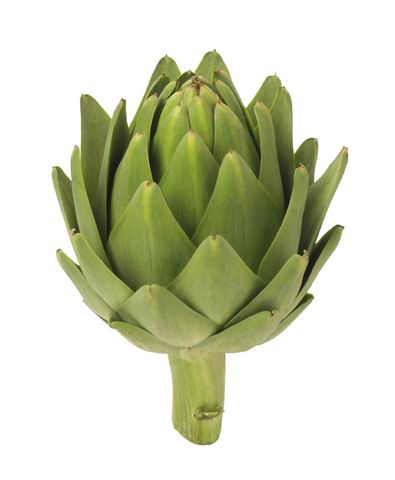
If ever there were a vegetable so full of intrigue, it could be the centrepiece of a steamy romance, a potboiler and a hotbed of controversy, the globe artichoke would take the prize.
With its ties to mafia, royalty, celebrities and even the gods, the artichoke has been called a monstrosity, rhapsodized in poetry by Pablo Neruda, and was once a food forbidden to women.
In Greek mythology, Zeus was so smitten by a beautiful mortal named Cynara, he made her a goddess so she could reside close to him on Mount Olympus. But when he discovered the homesick girl had briefly returned home to visit her mother, the spurned god threw her back to Earth, transforming her into an artichoke.
He must have aimed close to Sicily, as that is where globe artichokes are believed to have originated. The globe artichoke is simply an edible flower bud of a thistle plant from the sunflower family. With its outer scales, known as bracts, it looks cumbersome, almost dangerous to eat. But that’s not why 16th century women were outlawed from enjoying this delectable vegetable. Artichokes were believed to be a powerful aphrodisiac and considered indecent for a woman to enjoy.
How ironic, when centuries later and a continent apart, a beautiful young woman named Norma Jean Baker, who blossomed into sex symbol Marilyn Monroe, was crowned the first “Artichoke Queen” in 1948 at Castroville’s annual artichoke festival, which the small California community holds each May to celebrate the crop.
In 2006, American Idol’s William “She Bangs” Hung took the festival’s title of “Artichoke King.” Not to be confused with 1920s gangster Ciro Terranova, also known as “The Artichoke King” who monopolized the production and sale of artichokes, prompting New York City mayor Fiorelli La Guardia to temporarily ban the sale and display of artichokes in the city. In 1959, the classic TV series, “The Untouchables” based an episode on Terranova, entitled “The Artichoke King.”
With all of this rich back-story, one can’t help but be intrigued by the vegetable that generates such controversy. If all you’ve experienced of artichokes is marinated hearts, maybe it’s time for the rest of the story.
Although there are about 140 varieties of artichokes, the most common in North America are the green globes grown in California. The plants produce small, medium, and large sizes with the largest growing from the top of the plant and smallest at the bottom. And when it comes to taste and texture, the smaller the better.
When purchasing artichokes, choose globes that are dark green, heavy for their size, with tight bracts. Fresh artichokes can be placed in a plastic bag or dampened paper towels, then refrigerated for up to five days.
Wash thoroughly under running water, then turn upside down to shake out excess water. Slice an inch off the tip and cut all but one inch of the stem. Next, remove the layer of leaves at the base of the artichoke and trim the tops of the bracts with scissors to remove the thistles.
Artichokes oxidize quite rapidly, so either cook immediately or place in lemon juice to prevent discolouration. Use a large stainless steel pot to preserve the artichokes’ vibrant green colour. Boil or steam in salted water, with lemon slices and a bay leaf for 25 – 45 minutes depending on the size of the artichoke.
Once drained, remove each leaf one at a time and dip in lemon butter, hollandaise sauce or your favourite vinaigrette and pull the fleshy rounded section through your teeth.
A medium artichoke without the dips and sauces contains about 60 calories and is high in fibre, vitamin C, folate and magnesium.
Eating an artichoke can be a lengthy, yet satisfying experience. And once you have eaten all the leaves and scooped out the inedible choke (a cluster of hair-like strands) you will have reached what many consider to be the best part – the heart.
